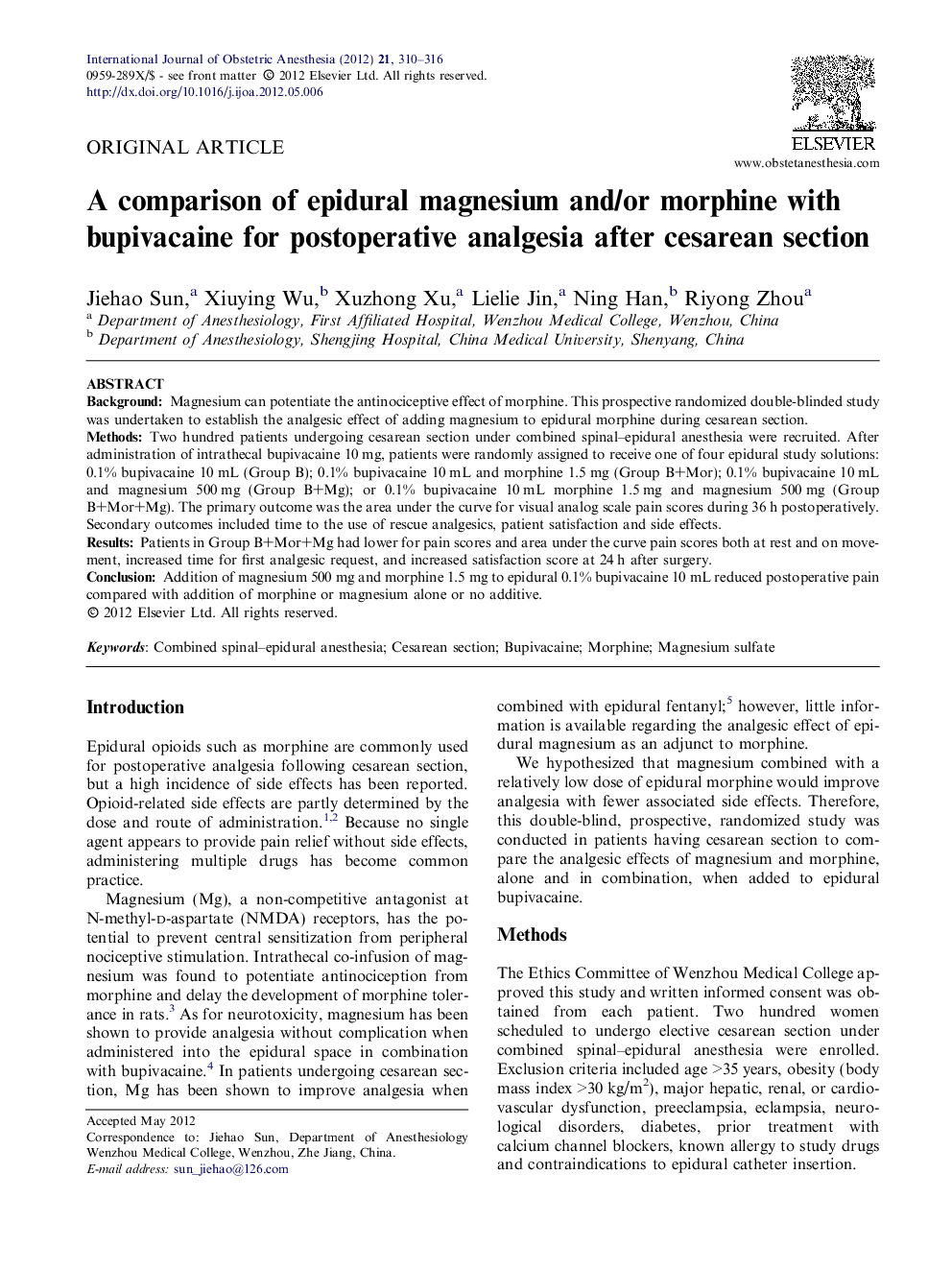| Article ID | Journal | Published Year | Pages | File Type |
|---|---|---|---|---|
| 2757884 | International Journal of Obstetric Anesthesia | 2012 | 7 Pages |
BackgroundMagnesium can potentiate the antinociceptive effect of morphine. This prospective randomized double-blinded study was undertaken to establish the analgesic effect of adding magnesium to epidural morphine during cesarean section.MethodsTwo hundred patients undergoing cesarean section under combined spinal–epidural anesthesia were recruited. After administration of intrathecal bupivacaine 10 mg, patients were randomly assigned to receive one of four epidural study solutions: 0.1% bupivacaine 10 mL (Group B); 0.1% bupivacaine 10 mL and morphine 1.5 mg (Group B+Mor); 0.1% bupivacaine 10 mL and magnesium 500 mg (Group B+Mg); or 0.1% bupivacaine 10 mL morphine 1.5 mg and magnesium 500 mg (Group B+Mor+Mg). The primary outcome was the area under the curve for visual analog scale pain scores during 36 h postoperatively. Secondary outcomes included time to the use of rescue analgesics, patient satisfaction and side effects.ResultsPatients in Group B+Mor+Mg had lower for pain scores and area under the curve pain scores both at rest and on movement, increased time for first analgesic request, and increased satisfaction score at 24 h after surgery.ConclusionAddition of magnesium 500 mg and morphine 1.5 mg to epidural 0.1% bupivacaine 10 mL reduced postoperative pain compared with addition of morphine or magnesium alone or no additive.
